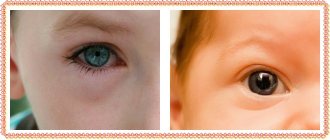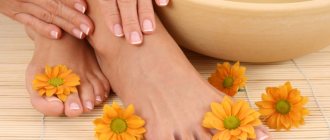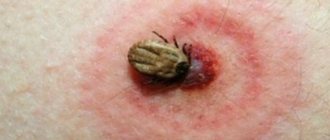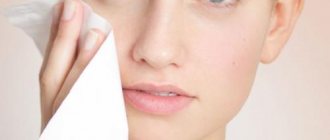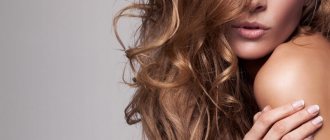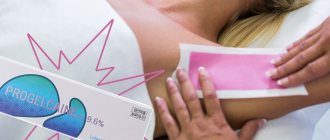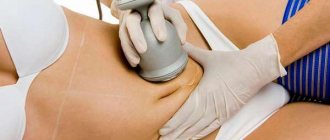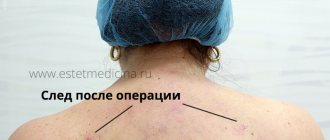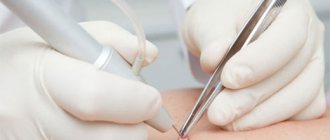What is cheilitis
Cheilitis is a disease characterized by the spread of a pathological process on the surface of the lips. Pathology is common, since lips are more susceptible to external factors than other organs. The development of inflammation is promoted by low-quality cosmetics and unfavorable weather, as a result of which they peel and crack.
Inflammation of the lips can be either a sign of the development of a serious disease or an independent pathology. But treatment must be carried out in a timely manner, since there is a high risk of transforming the cells of the upper layer of the epidermis into malignant ones.
Men and women are equally susceptible to cheilitis, regardless of age.
Why do the corners of my lips hurt?
If your lips hurt, the reasons for this phenomenon may lie in the influence of exogenous or endogenous factors. Before starting any treatment, it is necessary to determine why the corners of the lips hurt. The main reasons for pain in the corners of the lips include:
- Dry indoor air. If heating appliances are running at full power, the skin quickly dries out. The sensitive epidermis of the lips is especially vulnerable. Microcracks appear. With constant licking, the lips become drier and soreness appears.
- Frost and strong wind. With constant severe chapping, the lips dry out, crack, and hurt. To prevent negative phenomena, it is recommended to use protective cosmetics before leaving the premises.
- An allergic reaction after using low-quality or expired cosmetics - lipstick, balm, gloss. You may also be allergic to toothpaste. If your lips are red, dry, swollen, or sore, you must first check the composition and expiration dates of the products used.
- With low hemoglobin, cracks may also appear in the corners of the lips in children and adults.
- Nervous tension or stress.
- Smoking.
- Reaction after eating certain foods, for example, after pineapple, after spicy, sour, hot or salty foods. An abundance of salt and spices has a negative impact on sensitive skin. These are the prerequisites for the appearance of cracks on the upper and lower lips, in their corners.
- Bad habits - licking and biting the edges of the lips. The problem is especially aggravated if such movements occur in cold or hot weather.
- Dehydration of the body. This factor also contributes to the occurrence of cracks, peeling, and pain. Therefore, it is very important to maintain a drinking regime, drinking at least one and a half liters of clean water daily.
- Weakness of the immune system after suffering from colds, acute respiratory viral diseases. The body’s natural protective functions weaken, the fight against infectious diseases becomes more complicated, and this manifests itself in unpleasant symptoms.
- After a kiss, various problems may also appear in the form of redness, swelling, especially if the partner has a habit such as biting the skin with his teeth. Also, unpleasant symptoms may appear if the partner has herpes or open wounds.
Classification
Inflammation of the lips has several types. Each of them has its own signs and reasons for development.
Exfoliative
There can be two types: exudative and dry. The first is characterized by the formation of a brown or yellow crust.
After their removal, exudate is released. When dry, brownish scales appear, resembling mica in appearance. They are adjacent to the surface of the lips with the central part.
Glandular
It is most often diagnosed in patients over 30 years of age. This form manifests itself in the form of salivary gland ducts, protruding as small red dots from which saliva is secreted. The cause is hyperplasia or hyperfunction of the glands.
Allergic
Also called contact. Occurs against the background of an allergic reaction to cosmetics. Characterized by peeling, swelling and the presence of rashes.
Meteorological
The meteorological type of lip inflammation develops as a result of the influence of external factors. Often this is wind, severe frost, dust. The lower lip is more susceptible to the inflammatory process.
When their effects are eliminated, the pathology is capable of self-healing. In case of severe cases, a complex of vitamins and the use of hygienic lipsticks are prescribed. Against the background of the meteorological type, precancerous obligate forms of hyperkeratosis may appear.
Actinic
Associated with solar radiation. It manifests itself in the form of dryness, and may have an exudative form. Prevention methods include short exposure to the sun and the use of chapstick. They moisturize the skin of the lips and prevent moisture from evaporating.
Abrasive precancrosis cheilitis Manganotti
It is more often diagnosed in males. The causes are infections, injuries or a meteorological type of inflammation of the lips. It is characterized by the presence of one or two areas where the pathological process spreads. The surface of the lips is smooth and has a bright pink color.
Each type of cheilitis manifests itself depending on the causes of its occurrence. When prescribing treatment, the doctor determines the shape and extent of the lesion, since the method and duration of treatment depend on them.
Preventive measures
It is important to understand that if you do not get rid of the original cause of skin problems, peeling may soon reappear. Therefore, to prevent further skin irritation around the mouth, it is important to take the following preventive measures:
- Make it a rule to never lick your lips, especially on the street. After all, as a result, not only your lips will suffer, but also the skin around them.
- Carry out facial cleansing procedures using scrubs and peelings at least 2 times a week.
- After cleansing procedures, it is imperative to moisturize not only your facial skin, but also your mouth with a nourishing cream.
- Before going outside in frosty or windy weather, it is necessary to moisturize the area around the mouth with a protective cream in advance (at least an hour in advance). For men, instead of protective cream, you can use a special balm, which can be purchased at the pharmacy.
- Choose your cosmetics carefully. Before purchasing any cosmetic product, you must familiarize yourself with the composition and make sure that the cosmetic does not contain components that can provoke an allergic reaction. The best option is natural plant-based cosmetics. It is advisable for women to avoid using lipstick that dries out their lips - in winter it is better to use a moisturizing hygienic lipstick.
- Always remove makeup from your face before going to bed. For these purposes, it is better to use a special cosmetic liquid to remove makeup. It is not advisable to use soap, as it dries the skin too much.
- Watch your diet. It is important to prevent the occurrence of vitamin deficiency. It is necessary to ensure that your daily diet includes vegetables and fruits rich in vitamins.
Causes
There are many reasons for the development of pathology. The main ones are:
- Environmental impact . These can be sudden changes in temperature, which result in chapping and drying out of the skin.
- Allergic reactions.
- Unfavorable ecological atmosphere.
- Clogged pores with lanolin, which is included in most lipsticks.
- Thyroid diseases .
- Psoriasis or lichen. It can also spread to the face, affecting the mucous membranes of the lips.
- Exposure to chemicals and toxic substances.
- Pathologies of the liver or gastrointestinal tract.
- Vitamin deficiency is also a common cause of cheilitis.
In children, cheilitis can develop due to a violation of the physiological state due to improper breathing. Inflammation of the lips is a group of diseases that differ not only in their causes of origin, but also in their clinical manifestations.
Lips tingle after augmentation
After lip augmentation, it stings due to trauma to the skin with needles and the injection of the drug - the nerve endings react sharply to “external interference.” Such discomfort appears in the first minutes/hours after the procedure, quite strongly in the first 24 hours, then the sensations become less pronounced and disappear over the second day.
You cannot tolerate inconvenience if the following sensations are added to this feeling:
- strong pain;
- a sharp change in skin color in the injection area (from pink to white);
- increase in local and general temperatures;
- A burgundy edging appeared on the lips.
The formation of bruises on the lips after the injection of hyaluronic acid
Symptoms
Clinical signs of pathology appear depending on the type of inflammation. Exfoliative is characterized by peeling, which is present on the red border, the upper layer of the epidermis around the lips and mucous membrane. Dryness, burning, and scales may also appear.
Signs of granular include the appearance of small red dots on the red border and mucous membrane, from which saliva is released. They are the mouths of the salivary glands.
After prolonged moisturizing, the skin of the lips begins to peel and crack. Complaints also include itching. Over time, the skin becomes rough and keratinized. Leukoplakia lesions may form.
On this topic
- Cheilitis
Everything you need to know about atopic cheilitis
- Maria Konstantinovna Tevs
- July 18, 2020
The allergic form is manifested by itching, severe burning, redness and swelling of the lower and upper lips. After exposure to the allergen, the symptoms become more pronounced.
In the absence of treatment, blisters begin to form, a crust forms on the lips, after which, after removal, erosion and cracks are visible. In the case of a chronic course, the disease is characterized by slight flaking and itching. In this case, no inflammatory process is observed.
Meteorological symptoms are characterized by itching and burning. Erosion and crusts may appear at the site of bubble formation. Symptoms most often occur after prolonged exposure to the sun.
With abrasive precancrous cheilitis of Manganotti, swelling of the lips is noted. Swelling may spread to other parts of the face. In places of injury, the upper layer of the epidermis of the lips has a bluish tint. Neuritis appears in the form of a skew towards the healthy side, and the nasolabial fold is smoothed out.
Actinic is characterized by burning and severe itching. In cases of lack of therapy, blisters form, which are often injured. In their place a brownish crust appears.
All clinical manifestations can be pronounced, especially after contact with an allergen or long exposure to frost, wind or sun. The chronic form occurs without pronounced symptoms and is more often characterized by peeling and dryness.
How to get rid of dry lips?
If dry lips appear, then its causes and treatment are interconnected. Therefore, if discomfort on the lips is just the “tip of the iceberg,” you should start by eliminating the internal causes. In this case, only a doctor will determine how to correctly correct problems in the body.
However, you can improve your skin condition on your own.
Lip massage
A light massage will help restore smoothness. It is carried out using a toothbrush with soft bristles. In order not to damage the delicate skin, it must be lubricated with greasy cream, Vaseline or oil. With light circular movements without pressure, the surface of the lips is stimulated 3-4 times a day.
Massage will ensure a good supply of oxygen to tissues and improve the delivery of nutrients.
When lips are very dry, cracked and peeling, massage cannot be performed. You should wait until it heals to prevent harmful bacteria from entering.
Lip peeling
A cosmetic procedure that should not be forgotten if a woman has dry lips is peeling. When the layer of keratinized cells becomes too thick, the blood supply is disrupted and the surface begins to crack. In order to remove dead particles in a timely manner, the procedure is carried out once a week.
Very dry lips can be cleaned with a gentle peeling, which can be purchased at any cosmetic store. Its effect is weaker, so it needs to be done 2 times every 7 days. You shouldn’t be zealous; the fragile layer of the epidermis dries out a lot after frequent peelings.
Hydration
When your lips dry out, they constantly hurt and don't let you get distracted. Small cracks quickly deepen when you smile. In this case, the first aid is hydration. To restore the former shine and eliminate flaking and dry lips, you need a light moisturizer.
You can’t do without it, even if you plan to use another product in the future. Thanks to its delicate texture, the cream is quickly absorbed and provides hydration.
To moisturize dry lip skin, cubes of frozen herbal infusions are suitable. You can brew chamomile or string. If your lip is cracked, these herbs have a powerful wound healing effect.
Recipe:
- put 1 filter bag of dry raw materials into a thermos;
- pour a glass of boiling water;
- leave for 30 minutes;
- The liquid is cooled, poured into molds and frozen.
Tonic to help for beautiful lips
A tonic designed for sensitive facial skin will help nourish dry and chapped lips with moisture. Apply a little liquid to a cotton pad and touch dry lips with blotting movements. To effectively combat peeling, this manipulation is repeated at least 2 times a day.
Nourishing and moisturizing oils
If your lips are chapped, cream alone is not enough. Oils provide an excellent healing effect.
The list of the most effective:
- sea buckthorn oil;
- apricot;
- grape seed oil;
- avocado;
- rosehip;
- cocoa;
- almond.
The oils are saturated with fat-soluble vitamins A and E. They soften the crust that forms, preventing cracks from deepening when the lips dry out and peel. New cells reproduce faster, and when the coarsened film comes off and the next layer appears, it will be more elastic.
Baby cream - a panacea for cracks and dryness
A cheap and effective remedy that helps if your lips are dry and cracked is a classic baby cream. Even if the edges of the mouth are severely cracked, it helps to quickly restore the damaged areas. You should lubricate the skin throughout the day as it absorbs, avoiding complete drying.
The main active component of baby cream is panthenol, it accelerates the regeneration process. When your lips become very dry and cracked, you can use D-panthenol ointment, Panthenol or Bepanten cream. In these preparations the concentration of the active substance is much higher.
What to do if cheilitis occurs
In order to reduce the risk of developing a pathological process, when the first signs of a meteorological type of disease appear, it is necessary:
- Stay outside as little as possible .
- Use chapstick before going out.
- Take vitamins B and PP.
- Rinse daily with oak bark tincture.
- Use wound healing agents.
On this topic
- Cheilitis
Why is exfoliative cheilitis dangerous?
- Maria Konstantinovna Tevs
- June 23, 2020
When establishing the actinic type of pathology, experts recommend:
- Use hygienic lipstick .
- Take vitamin complexes.
- Rinse your mouth with infusions based on various herbs that relieve inflammation (oak bark, chamomile, sage).
- Use hormonal ointments.
- Use special sunscreen cosmetics.
In cases of diagnosing an allergic type of disease, it is necessary:
- Rinse your mouth after every meal.
- Avoid contact with the allergen.
- Take vitamins and antihistamines.
- Use anti-inflammatory creams.
With the development of exfoliative type of pathology, it is recommended:
- Use anti-inflammatory ointments and creams.
- Use antibacterial drugs.
- Take vitamins.
To relieve the first signs of abrasive precancrosis Manganotti cheilitis, it is necessary to undergo an analysis to determine the type of bacterium that caused the development of the disease.
In case of a positive result, it is recommended to take antibacterial drugs, which are selected taking into account the type of infection. You also need to treat the affected areas with an oil solution daily. It will relieve dryness and moisturize your lips for a long time.
Prevention
To prevent your lips from peeling, you need to properly care for their delicate and delicate skin at any time of the year. Do not forget that it is devoid of fat and here the blood vessels are located dangerously close to the surface. So only you can provide her with protection. Compliance with several preventive measures will not require much time and expense, but will protect you from unpleasant sensations in the future. What will you need:
- Visit your dentist regularly to rule out oral diseases that could cause flaking. Correct malocclusion in a timely manner.
- Once a week, exfoliate and massage using a soft toothbrush dipped in olive oil. After which any moisturizing mask is applied for half an hour.
- In the morning, wipe with an ice cube wrapped in 2 layers of gauze.
- Use only natural and high-quality cosmetics.
- Before going outside, apply balm or hygienic lipstick.
- Eat right and drink enough water.
- Do not bite or lick your lips (especially on the street).
You can’t approach peeling lips from the perspective of the Russian “maybe”: so, they say, it will pass. Only proper care and timely treatment will help you cope with this problem.
Diagnosis of cheilitis
Diagnosis of the disease is carried out by a dentist based on the patient’s complaints and clinical manifestations. During the examination, the doctor determines the degree of soft tissue damage and the area of distribution of the pathological process. In addition, the specialist examines the patient’s medical history to determine the causes of the pathology.
In some cases, an analysis may be prescribed to determine the type of infection and histological examination of tissues if malignant cell transformation is suspected. Based on the results obtained, a diagnosis is determined and treatment is prescribed. In addition, consultation with a neuropsychiatrist or endocrinologist is necessary.
The mechanism of cracks and jamming in the corners of the mouth
First of all, let us pay attention to the conditions for maintaining personal hygiene of a patient with angulitis.
- The toothbrush and toothpaste should be replaced, and the towel should be changed daily.
- Dishes and cutlery should be rinsed with soda solution.
- It is necessary to include pharmacy vitamins B2, PP in the diet, add foods that are rich in vitamins of group PB: beef, liver, cheese, wild rice, eggs, broccoli, green beans, sprouted wheat. It is beneficial to take a drink made from brewer's yeast.
- Vegetarians should regularly consume oatmeal jelly, buckwheat cereals, soy and almond milk, as well as pumpkin seeds and sesame seeds to prevent depression.
- Regular consumption of clean or mineral water is mandatory to prevent dehydration of the body and drying out of the mucous membranes. Cranberry and blueberry juice, dried fruit and black currant compote.
- Strengthening the immune system also contributes to successful recovery.
All medications are prescribed by the attending physician. Among the universal remedies that radically fight yeast and streptococci, one can highlight the antiseptic liquid drug stomatidine.
- For the treatment of angulitis of fungal origin, clotrimazole ointment gives a good effect.
- Bepanten has a healing effect.
- Traditional treatment involves the use of tetracycline and mirastamine ointments.
- Solcoseryl - this ointment contains a dialysate substance, which is made from the blood of cattle. The presence of natural components promotes rapid healing of the wound surface.
- Zinc ointment quickly forms an antimicrobial protective barrier on the skin, dries out weeping ulcers and heals cracks.
- Additional components of Acyclovir are calcium and starch, which helps rapid healing.
- The wounds should be disinfected with a solution of flucinar or brilliant green. Several times a day. Please note that after these drying solutions it is necessary to apply applications with a fatty component, for example, rosehip oil or vitamin E capsules.
We invite you to familiarize yourself with a lump appeared on the roof of your mouth photo.
Fluconazole, an antifungal drug, immunomodulators from the cytokine series, antibiotics such as amoxil, augmentin, summed are successfully used to treat angulitis. Patients are prescribed a complex of multivitamins.
https://www.youtube.com/watch?v=QD-K44yl3MM
Additionally, in the presence of long-term non-healing wounds, antihistamines are prescribed: loratadine and claritin. Tincture of eleutherococcus and echinacea to strengthen the immune system.
Our ancestors were treated with what nature gave them. Priceless recipes were passed down from generation to generation and carefully preserved by our ancestors.
Folk sages call seizures “the disease of someone else’s spoon.” In ancient times, nothing was known about the microflora, but people went to visit with their own spoon, because, as the proverb says, “someone else’s (dry) spoon hurts your mouth.” The eloquent proverb “a thrifty guest does not visit without a spoon” indicates that wisdom is more valuable than medicine.
And although city residents use the pharmacy more often than in the old days people went to healers, nevertheless, the demand for ancient recipes of traditional medicine does not decrease. Here are some examples of how you can cope with rashes after a cold and seizures at home.
- A decoction of oak bark is traditionally considered the best way to treat seizures.
- Rinsing the mouth, lotions made from a mixture of herbs, sage, and chamomile will help soothe itching and promote rapid healing of wounds.
- Regularly washing the corners of your mouth with laundry soap.
- Applying applications of sea buckthorn oil, applying a mixture of garlic and Vaseline, balm made from natural honey and butter.
- In the presence of the herpes virus, extracts of aloe vera and propolis are used.
- Cocoa butter softens lips well.
- Water from a thermal spring has amazing healing properties.
The main reason for the development of sores in the corners of the mouth is the activity of pathogenic microorganisms. Today it is known that jams are formed against the background of tissue damage by streptococcal or fungal infection. If we are talking about bacterial inflammation, then the most active in this regard is epidermal streptococcus. Fungal infections are most often represented by candidiasis (thrush).
It is worth noting that the above-mentioned microorganisms belong to conditionally pathogenic microflora, which means they are present in the tissues of every healthy person. Their number is strictly controlled by the immune system, so in most cases microbes do not pose a particular threat. However, against the background of local or systemic weakening of the immune system, various skin inflammations may develop, which often leads to the formation of sores.
Activation of opportunistic microflora may be associated with exposure to many risk factors. Their list includes:
- using unwashed dishes;
- eating unwashed fruits, vegetables and other foods;
- insufficient oral hygiene;
- scratching the skin around the lips;
- squeezing out pimples in the corners of the mouth;
- constant licking of lips;
- severe weathering, hypothermia (this causes a temporary local weakening of the immune system).
Of course, these are not all the reasons. If we are talking about specific infections, then risk factors include contact with infected people (close communication, kissing, sharing utensils, etc.).
If sores appear in the corners of the lips, this may indicate the development of certain diseases. The formation of so-called jams is characteristic of many pathologies.
- Various types of anemia, including iron deficiency (decrease in the number of red blood cells and hemoglobin levels).
- Cracks in the corners of the mouth indicate the presence of liver disease.
- Risk factors include hypovitaminosis. Vitamin deficiency affects the functioning of the immune system.
- People with diabetes often suffer from cracks, ulcers and other skin sores.
- Such symptoms may be associated with a prolonged increase in body temperature.
- A decrease in immune activity, as already mentioned, contributes to the appearance of skin lesions. Risk factors include immunodeficiencies.
- Damage to the delicate skin on the lips may be associated with long-term treatment with immunosuppressants, glucocorticoids and cytostatics.
- Risk factors include dental diseases, including caries. An incorrectly installed prosthesis or crown also contributes to the active proliferation of pathogenic microorganisms.
Now you know why sores appear in the corners of your lips. But it is worth understanding that in most cases, risk factors act in combination.
Almost every person has encountered such a problem as jamming. This kind of pain occurs in several stages. As a rule, first a small watery bubble with a clear (sometimes cloudy) liquid inside appears in the corner of the mouth. Subsequently, the vesicle bursts, resulting in the formation of a small ulcer covered with a crust on the skin.
A person faces constant discomfort. When visiting a doctor, patients often complain of itching and severe burning in the corner of the mouth. There is pain when opening the mouth. Sometimes the skin in the affected area cracks, which is accompanied by the release of a small amount of blood. The skin around the affected area becomes inflamed, red and begins to peel.
If we are talking about candidiasis infection, then a white cheesy coating may form on the mucous membrane and skin of the lips.
What to do if sores appear in the corners of your lips? How to treat? If you cannot cope with the jam using home remedies, then you should consult a doctor. The specialist will definitely prescribe an effective ointment.
In therapy, “D-Panthenol” or “Bepanten” is often used (these ointments contain the same active substance). These drugs have anti-inflammatory properties, however, it is more advisable to use them already during the period of wound healing.
If we are talking about bacterial infections, it is recommended to treat sores in the corners of the mouth with Metrogil-denta. This medicine has pronounced antibacterial properties.
https://www.youtube.com/watch?v=F6P218MAlXI
In case of fungal infection, Clotrimazole cream will be effective. It is worth understanding that the drug is not active against bacterial microorganisms and viruses.
To treat wounds on the skin (including on the lips), tetracycline and streptocidal ointment can be used. In the presence of bacterial inflammation, medications such as Levorin ointment, Levomekol and Levomycetin will be effective. According to reviews, these products literally instantly relieve burning and itching - the skin begins to heal.
Treatment of lip inflammation
Local treatment involves the use of laser therapy and ultrasound. Therapy should be comprehensive and, together with physiotherapeutic procedures, hormonal drugs, vitamin complexes and antibacterial drugs are prescribed.
The duration of treatment largely depends on the extent of the lesion, severity and type of disease. Often complex therapy is carried out over several months.
For glandular cheilitis, ointments and creams that have an anti-inflammatory effect are prescribed. The most effective are tetracycline, oxolinic and erythromycin ointments.
Candidiasis on the lips
Caused by excessive proliferation of yeast-like fungi of the genus Candida. Most often, this form of cheilitis affects children, the elderly, and women of childbearing age.
The greatest incidence rate has been recorded in places with a warm climate and high humidity, for example, near the sea coast.
The main reason is reduced immunity, which can be caused by seasonality, past illnesses, and poor lifestyle.
Candidal cheilitis begins with redness of the outer surface of the lips and the mucous membrane inside, swelling and a gray-white film appear. A white cheesy coating forms on the mucous membrane, which, when cleansed, reveals inflamed areas.
The surface of the lips becomes very dry, cracks form, the tightness of the skin makes it painful to open the mouth, and seals form in the corners of the lips. If not treated in a timely manner, the disease becomes complicated by candidal stomatitis.
When treating fungus on the lips, antifungal ointments based on nystatin or clotrimalose are prescribed. Be sure to rinse your mouth with soda or a weak solution of potassium permanganate.
If local treatment at home does not have an effect, the doctor prescribes antifungal drugs (Diflucan) to be taken orally. You should definitely take immunostimulating drugs and vitamin complexes.
A dermatologist will tell you more about different types of disease:
Folk restoratives
When the cause of the seizure has been eliminated, and it itself has disappeared from sight, you need to continue strengthening the body so that relapses do not occur.
Time-tested folk remedies are suitable for this.
- The mucous membrane of the lips, which has suffered stress from inflammatory processes, needs to be moisturized and protected from harmful effects. At this stage, ready-made Vaseline will do. It contains mineral oil, which softens the skin, and paraffin, which creates a protective film.
- Before going to bed, you can wipe with a natural lotion - cucumber or plantain juice, which will clean the surface. Lubricate with antiseptic - honey.
- Any vegetable oils are suitable for moisturizing: olive, sea buckthorn, flaxseed and others.
- Honey can be combined with fish or goose fat (1 teaspoon: 10 drops).
- Lotions made from herbal infusions have a good effect: sage, chamomile, marigold, string, celandine. The healing properties of fresh aloe juice tincture have been noted. To do this, a plant leaf (plant age {amp}gt; 3 years) is cut, kept in the cold for about 4 hours, and cut lengthwise. Place in a glass container, pour boiling water over it and leave for 24 hours. Wipe problem areas twice a day.
- An infusion of snakeweed and fresh Kalanchoe juice are used as a disinfectant and antimicrobial agent.
How to treat cracks in the corners of the lips
Usually, ointments and vitamins are used to treat this pathology.
The main thing is to choose the right drug.
- For seizures of streptococcal origin, antibacterial, anti-inflammatory ointments are suitable: Miramistin, Trimistin, Tetracycline.
- If the jam is caused by candida fungus, then the following will help eliminate it: Stomatidine, Clotrimazole, which have antifungal properties and have an antiseptic effect.
- In case of a viral seizure, ointments will help: Acyclovir, Gerpevir - antiviral drugs.
- When tests do not give results, and the nature of the origin of the jam remains unknown, ointments that have a complex effect are used: Fukortsin, Metrogyl Denta.
To enhance the processes of restoration, healing, and renewal of the skin, vitamin complexes containing vitamins are used: A, C, E - Duovit, Multi-tabs, Vitrum.
For prevention: Ascorbic acid, Aevit, Ascorutin.
